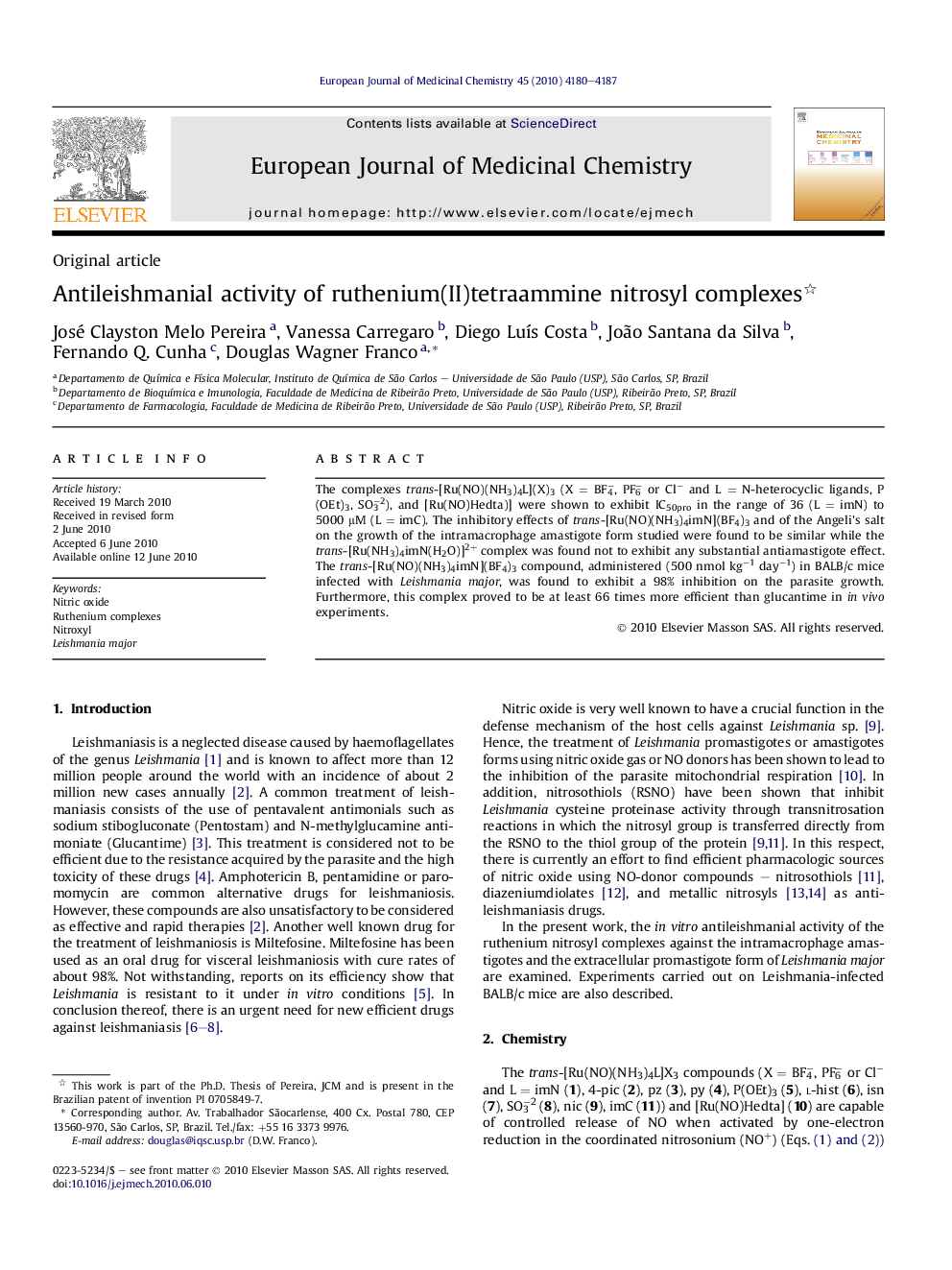| Article ID | Journal | Published Year | Pages | File Type |
|---|---|---|---|---|
| 1394818 | European Journal of Medicinal Chemistry | 2010 | 8 Pages |
The complexes trans-[Ru(NO)(NH3)4L](X)3 (X = BF4−, PF6− or Cl− and L = N-heterocyclic ligands, P(OEt)3, SO3−2), and [Ru(NO)Hedta)] were shown to exhibit IC50pro in the range of 36 (L = imN) to 5000 μM (L = imC). The inhibitory effects of trans-[Ru(NO)(NH3)4imN](BF4)3 and of the Angeli’s salt on the growth of the intramacrophage amastigote form studied were found to be similar while the trans-[Ru(NH3)4imN(H2O)]2+ complex was found not to exhibit any substantial antiamastigote effect. The trans-[Ru(NO)(NH3)4imN](BF4)3 compound, administered (500 nmol kg−1 day−1) in BALB/c mice infected with Leishmania major, was found to exhibit a 98% inhibition on the parasite growth. Furthermore, this complex proved to be at least 66 times more efficient than glucantime in in vivo experiments.
Graphical abstractComplexes trans-[Ru(NO)(NH3)4L](X)3 where X = BF4−, PF6− or Cl− and L = imN (C3H4N2), 4-pic (C6H7N), pz (C4H4N2), py (C5H5N), P(OEt)3 (C6H15O3P), l-hist (C6H9N3O2), isn (C6H5N2O), SO3−2, nic (C6H6N2O), imC (C3H4N2) and [Ru(NO)Hedta)] proved to exhibit in vitro antileishmanial effect. The trans-[Ru(NO)(NH3)4imN](BF4)3 compound was found to exhibit a significant in vivo effect against Leishmania major.Figure optionsDownload full-size imageDownload as PowerPoint slide
